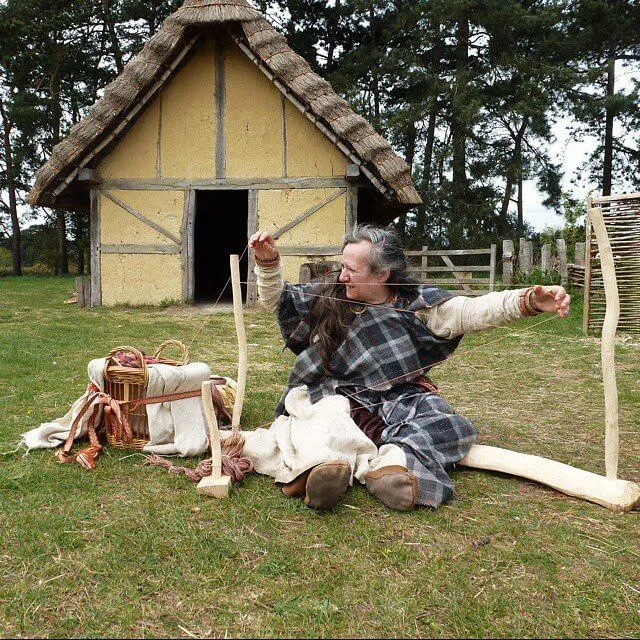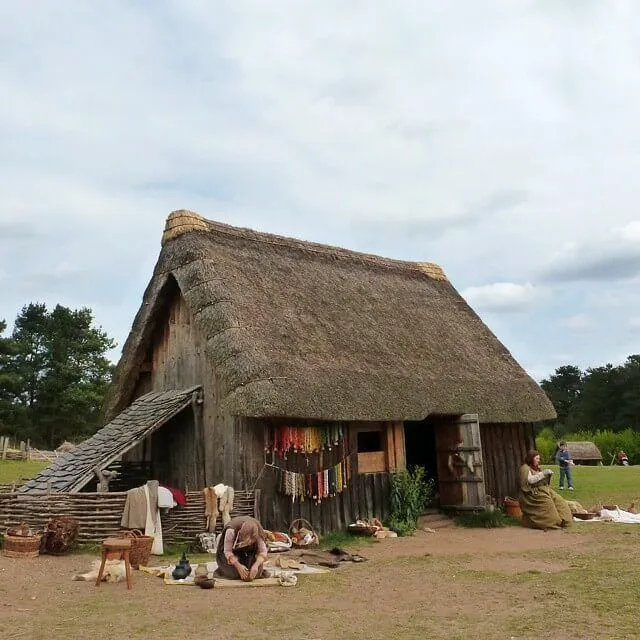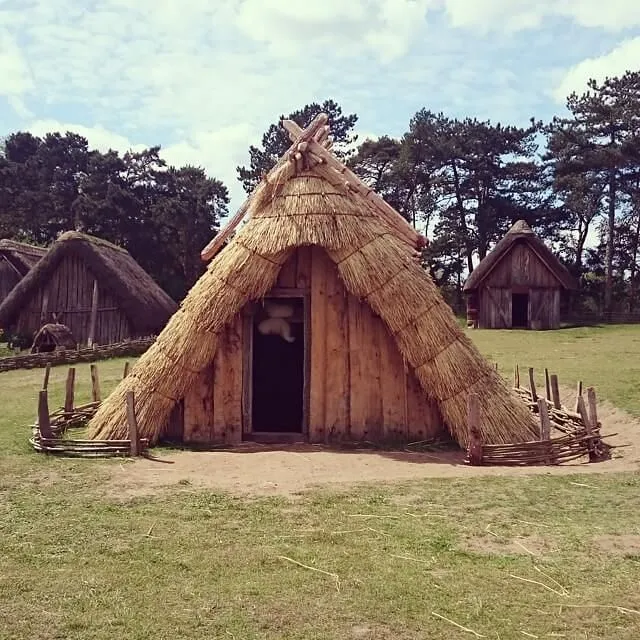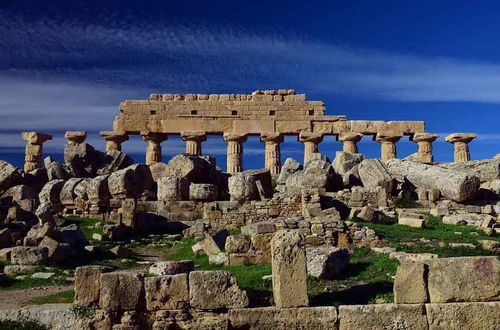FOR AGES 7 YEARS TO 11 YEARS
Anglo-Saxons - not as famous as the Romans, but nevertheless an important part of British history.
As part of their history studies in KS2, children must learn about the Anglo-Saxons and discover more about their houses and their way of life. Our easy guide will help you find out more, and learn some fun facts.
Anglo Saxons lived in England from the 5th century (400AD onwards). Anglo-Saxon refers to the Germanic tribes who came to Britain from continental Europe, their descendants and the native British people who took on the Anglo-Saxon language and way of life.
The Anglo-Saxons have left us with lots of reminders of their time in England. See if there are any towns or villages near you that have Anglo-Saxon names. If a place name ends in ton, lee, wick, hamm, worth or bury, that is an Anglo-Saxon name.
The Anglo-Saxons were around from the 5th century until 1066, after the Romans but before the Normans. They did not want to adopt the Roman way of life, so the villas, streets, baths and towns built by the Romans were forgotten and fell into ruin.

Image © West Stow Anglo-Saxon Village
While Romans had stone or brick houses with tiled roofs, underfloor heating and even glazed windows, the Anglo-Saxons houses were far more primitive.
Anglo-Saxon houses looked like tiny, basic country cottages. They were made of wood - luckily England was covered in forests at that time, so there were plenty of building materials for them! The wood huts were square or rectangular and had pitched roofs that were thatched with straw. Sometimes, the house would be dug down into the ground, and these huts would have a roof that would go right over the hut, touching the ground.
Although most houses were wood, their churches were made of stone and there is evidence that homes of important people were also built out of stone.

Image © West Stow Anglo-Saxon Village
These huts were very different to the houses we know now. They consisted of just one room, which was used for everything from cooking and eating, to sleeping and having friends over. They even kept their animals in them.
There were no windows, just slits in the wood, so the houses were built where they would get maximum light and heat from the sun.
In the middle of the one room, was a fireplace. The smoke from the fire would escape through a hole in the roof.
Saxon homes had a wooden floor, which would have rushes strewn on it, and furniture would have included, chests, a bed, table and folding iron chairs. They would sit on benches to eat, and hang tapestries on the wall to keep the one room warm.

Image © West Stow Anglo-Saxon Village
Anglo-Saxon villages were quite small - there would be less than 100 people living there, and often far less. The biggest house would belong to the village chief, who lived in a hall, which he shared with his warriors, and sometimes cattle! Not all huts were homes, they might be used for making pottery and weaving.
Thanks to archaeologists who have excavated Anglo-Saxon villages, we have a good idea of what the houses looked like, and how an Anglo-Saxon village was arranged.
Some Anglo-Saxon villages were built inside the walls of Roman towns. if not, the village would be protected by a tall wooden fence, which would keep out foxes, boars and wolves.
Many villages were built near rivers because the Anglo-Saxons were known to be good sailors. They would also clear forests to make new fields and build a village.
Near the village was common land for grazing cattle and sheep. They also kept pigs, caught fish and hunted animals for meat and made their own clothes.
They were self-sufficient, making their own household goods and farming equipment from pottery, metal and wood. They also traded for anything they were unable to make, such as glass, they would trade slaves (did you know that the word Briton was interchangeable with the Anglo-Saxon word for slave?) and hunting dogs.
West Stow Anglo-Saxon Village in Suffolk
The Museum of London
Bede Museum at Jarrow Hall, in Jarrow, Tyne and Wear
Ask your kids these questions:
What sort of food do you think Anglo-Saxons ate?
How would they keep warm?
Where would everyone sleep?
Read The Disclaimer
At Kidadl we pride ourselves on offering families original ideas to make the most of time spent together at home or out and about, wherever you are in the world. We strive to recommend the very best things that are suggested by our community and are things we would do ourselves - our aim is to be the trusted friend to parents.
We try our very best, but cannot guarantee perfection. We will always aim to give you accurate information at the date of publication - however, information does change, so it’s important you do your own research, double-check and make the decision that is right for your family.
Kidadl provides inspiration to entertain and educate your children. We recognise that not all activities and ideas are appropriate and suitable for all children and families or in all circumstances. Our recommended activities are based on age but these are a guide. We recommend that these ideas are used as inspiration, that ideas are undertaken with appropriate adult supervision, and that each adult uses their own discretion and knowledge of their children to consider the safety and suitability.
Kidadl cannot accept liability for the execution of these ideas, and parental supervision is advised at all times, as safety is paramount. Anyone using the information provided by Kidadl does so at their own risk and we can not accept liability if things go wrong.
Kidadl is independent and to make our service free to you the reader we are supported by advertising.
We hope you love our recommendations for products and services! What we suggest is selected independently by the Kidadl team. If you purchase using the buy now button we may earn a small commission. This does not influence our choices. Please note: prices are correct and items are available at the time the article was published.
Kidadl has a number of affiliate partners that we work with including Amazon. Please note that Kidadl is a participant in the Amazon Services LLC Associates Program, an affiliate advertising program designed to provide a means for sites to earn advertising fees by advertising and linking to amazon.
We also link to other websites, but are not responsible for their content.
Was this article helpful?



Browse Category



We’ll send you tons of inspiration to help you find a hidden gem in your local area or plan a big day out.



Check your inbox for your latest news from us. You have subscribed to:
Remember that you can always manage your preferences or unsubscribe through the link at the foot of each newsletter.